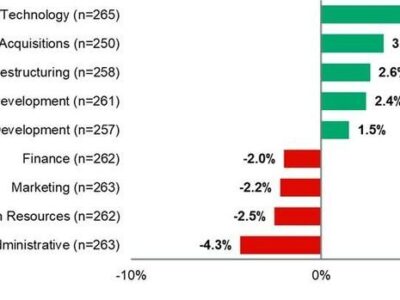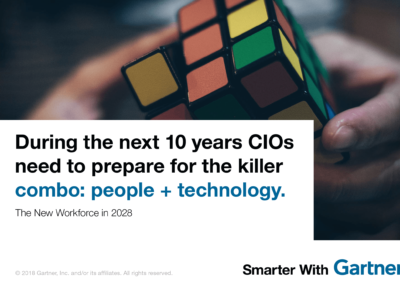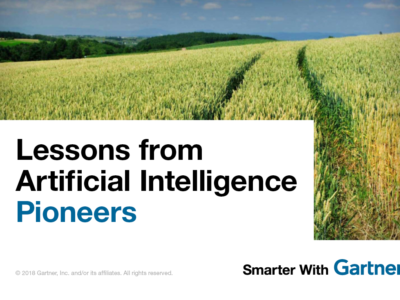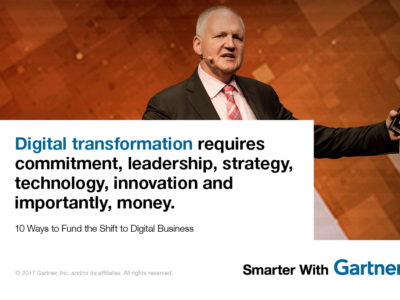How GE Digital, Kone and Salesforce evolve the business with strategic partnerships.
Kone, a Finnish elevator and escalator company, was looking for a partner to combine its customer base with. The forged alliance is complementary to Kone’s philosophy and ideals; together, they enable Kone’s go-to-market strategies.
VGZ, a health insurance provider in the Netherlands, builds partnerships with hospitals and other healthcare institutions to foster innovation and leverage the use of good practices in the medical field to improve patient care.
GE Digital expects its partners to be innovative and to have capabilities for business model innovation that extend beyond a service provider scope
China Mengniu Dairy embraces a global partnering and collaboration strategy for its development. The company leverages shareholder competencies and resources, as well as a number of digital partners, to deliver its digital transformation goals.
GE Digital expects its partners to be innovative and to have capabilities for business model innovation that extend beyond a service provider scope. This requires a reassessment of the partner’s engagement model and re-evaluation of value and risk.
Salesforce, a U.S. cloud computing company, wanted partners for innovative thought processes and evaluates a potential partner’s certifications and benchmarks. Salesforce streamlined its business partner model by consolidating partner types under one management umbrella to spur innovation and manage partner development
There are many reasons for partnerships, depending on the goals of the company and what type of relationships are important to the success of the business.
No matter the reason for the partnership, in the digital world, it’s important that CIOs understand the role of alliances in business ecosystems to turn economic connections into competitive advantages. CIOs must balance trust and control when creating a diversified engagement strategy. Building successful alliances in business ecosystems will position the CIO as orchestrator of the digital agenda
“Sustainable alliances require an artful approach that balances trust and control,” said Remi Gulzar, research director and agenda manager with Gartner’s Office of the CIO research team. “To deliver on business outcomes and drive innovation, CIOs must understand the forming of alliances in business ecosystems.”
Categorize allies into archetypes
CIOs will be tasked with assessing how much interaction will be necessary and which archetype creates the relationship that will drive innovation for the enterprise. Alliances consist of four basic archetypes: Service Provider, Business Partner, Trusted Ally and Outsider.
The relationships range from no recurring relationship to a very intimate relationship, depending on the enterprise and end goals. One type of relationship might offer less trust, but more room for innovation. Others may offer a closer working relationship, but less creativity.
Service Provider: This is the most limited recurring interaction. This archetype manages a defined set of services delivered to the enterprise. They offer little in terms of innovation or creativity, and are measured on their ability to deliver the services. These companies will not contribute directly to growth, and generally consist of very transactional relationships like outsourcing and licensing.
Business Partner: This archetype is more involved in the business, and offers an excellent understanding of current and future business plans. The enterprise considers the business partner when making mid- and long-term plans. The business partner will also act for the enterprise on tactical and strategic levels, based on established mandates. The enterprise will generally work with the business partner to develop tactics to deliver on business outcomes and innovations like developing or accessing new channels.
Trusted Ally: This archetype shares the responsibilities, risks and rewards of growing the business with the enterprise. It is an intimate relationship, and trusted allies are used to influence innovation, develop intellectual property, establish the enterprise in the ecosystem and work on platforms. This archetype is used to strategize and explore new opportunities.
Outsider: This is the only archetype with a nonrecurring relationship. The outsider performs a single transaction or activity for the enterprise, like developing a proof of concept of prototype. The benefit to this relationship is that the outsider is not bound by the rules and regulations of the enterprise, so it may contribute to innovation and strategy. This archetype provides a freedom for exploration and experimentation.
The archetype an enterprise selects will depend on the needs and business outcomes of the company. The recurring archetypes will require more management, but the outsider archetype will provide flexibility at a steeper upfront cost. The decision will depend on what level of interaction the CIO requires, and what type of contribution a partner can offer.
Get Smarter
Client Research
Gartner clients learn how to build strategic alliances in the full report titled Build Alliances to Thrive in Business Ecosystems.
Gartner Event
Learn more about CIO leadership and how to drive digital innovation to the core of your business at Gartner Symposium/ITxpo 2016. Follow news and updates from the events on Twitter using #GartnerSYM.











